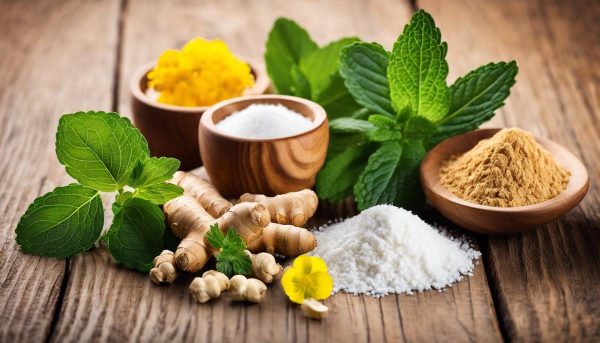As we journey through the maze of modern life, the surge of stress, irregular lifestyles, and improper diet often paves the way for various health issues. One such repercussion is the highly debilitating ailment called a migraine. Characterized by throbbing, recurrent headaches, migraines can adversely affect the quality of life of those plagued by them.
However, with our deeper understanding of migraines – their symptoms, triggers, and phases – we can go beyond the realm of traditional pharmaceutical treatments and explore equally effective natural remedies. By harnessing the power of certain foods, staying optimally hydrated, employing basic relaxing exercises, and utilizing readily available natural healing agents, the shadow of migraines can be considerably diminished, paving the way for healthier and happier lives.
Understanding Migraines
Getting a Handle on Migraines: Unraveling the Mystery for Your Family’s Wellbeing
In our shared journey of parenthood, balancing the well-being of every family member becomes a significant task. Among the many health topics that can cause stress and confusion, one that frequently pops up is the elusive migraine. But what is a migraine, and how does it affect us? Let’s break it down, one piece at a time, so you can be well-prepared and capable of addressing this issue as it arises in your family.
A migraine is not just a fancy name for a headache. It’s a neurological condition characterized by intense, debilitating headaches that can last anywhere from 4 to 72 hours. The pain tends to be throbbing, typically concentrated on one side of the head, though it can switch sides or even be felt all over the head.
It’s important to remember, that while a headache can be one of the most noticeable symptoms, migraines often come with a host of other symptoms too. These can include nausea, vomiting, sensitivity to light (photophobia), sound (phonophobia), and even certain smells. Some individuals experience visual disturbances known as “aura” before the headache strikes, serving as an unwelcome warning of what’s to come.
But how prevalent is this condition and how does it impact our daily lives? According to the Migraine Research Foundation, migraines affect approximately 12% of the population, including children. They can drastically affect the quality of life, impede productivity, and impose a significant burden on both the sufferers and their families.
Migraines are believed to be caused by a mix of genetic and environmental factors, making it more common in individuals who have a family history of the condition. Triggers can vary widely from person to person, but some of the most common include hormonal changes, stress, certain foods and drinks, changes in sleep patterns, and even weather changes.
Facing migraines within a family can be a difficult journey. Parents might feel helpless seeing their children in pain, and even adults can find their daily routine significantly disrupted by a sudden migraine attack. But knowledge is power, and understanding this condition is the first step to managing it effectively.
It’s also crucial to remember that every individual’s experience with migraines will be different. Hence, what works for someone else might not work for your family member. Visiting a healthcare professional for a thorough evaluation is often the most effective way to tailor a management strategy.
While migraines can be complex and challenging, families do not need to face this journey alone. Numerous resources are available both online and within your local community. Moreover, many have found comfort and strength in online support groups, a platform to share experiences and gain knowledge from others going through similar trials.
Dealing with migraines might seem like an uphill battle, but with understanding, care, and the right support, these challenges can be overcome. So here’s a loving reminder to take things one step at a time, seek help when needed, and remember that you’re doing an incredible job taking care of your family’s health. After all, it’s these hurdles that make us not just parents or caregivers, but the pillars of our family’s wellbeing.
Food and Hydration
Shifting gears to diet and hydration habits, it’s time to explore the outlet where a significant amount of personal control can be exerted to combat migraines. Many studies have made compelling associations between what we consume and migraines, both their frequency and intensity. It’s important to remember every person is unique, and while some strategies might work wonders for one, they may not for another. So consider these as helpful possibilities, not guaranteed solutions.
Starting with hydration, it’s widely known that dehydration is one of the triggers for migraines. Dehydration can lead to reduced blood supply to the brain due to reduced water volume in your body. This, in turn, can stimulate the nerves that manage your body’s blood vessels, causing a migraine. With this understanding, maintaining proper hydration levels is paramount to those prone to migraines.
Water isn’t the only hydration source out there, keep in mind. A diet rich in fruits and vegetables can also assist in keeping bodies properly hydrated due to their high water content. For instance, watermelon, cucumbers, strawberries, peaches, and oranges are great sources of hydration paired with essential vitamins and nutrients that help promote overall health.
Navigating our diet, many have found a correlation between certain food choices and the onset of migraines. Foods high in histamines, nitrates, and MSG like some deli meats, wine, aged cheese, or processed foods tend to be common culprits. In contrast, a well-balanced diet rich in whole foods and plenty of fresh produce can be a significant part of managing and mitigating migraines.
Omega-3 fatty acids—an essential fat our bodies can’t produce—are noted for their anti-inflammatory properties. There’s a growing body of evidence suggesting this essential fat can help reduce the frequency and severity of migraines. So pack in those fatty fishes like salmon, mackerel, and sardines, or tackle avocados and flaxseed if you’re looking for vegan options.
One should also take care to maintain regular eating habits, avoiding dieting and fasting. Both can lead to low blood sugar, which can trigger a migraine. It’s recommended to strive for regular meals and snacks throughout the day to keep blood sugar levels steady.
Taking fiber into account, foods rich in it can support the regulation of sugar levels in your blood and promote healthier gut bacteria. It’s not uncommon for certain gastrointestinal disorders, such as IBS, to significantly co-exist with migraines, making the promotion of positive gut health potentially beneficial.
Unsurprisingly, caffeine plays a dual role. A moderate intake could help in preventing migraines, thanks to its vasoconstrictive properties, which can counter the blood vessel enlargement thought to cause migraines. However, excessive consumption or a sudden stop of intake can potentially lead to migraines and other headache types.
While it’s clear that diet and hydration serve essential roles in migraine regulation, it would be remiss not to mention the overarching importance of a holistic approach toward health and prevention. Good sleep, stress management, regular exercise, and conscious lifestyle habits will also play into the hands of your well-being and even aid in reducing the bane of migraines.
Consulting a healthcare professional before making any drastic diet shifts is essential because their guidance can be beneficial to overall health and the management of migraines.
Remember that patience and resilience are needed when navigating through diet and lifestyle changes, especially if the goal is to reduce something as complex as migraines. It’s about creating a loving, caring environment for your body and mind, one step at a time, to achieve not only migraine relief but a healthier, more enriching life.
Natural Ingredients for Migraine Relief
One of the commonly sought-after remedies for migraines in the modern lifestyle is the use of natural ingredients. As parents, homemakers or anyone deeply involved in family life, knowing which of these ingredients could potentially bring relief can be empowering.
Ginger could be considered a hero in your kitchen when it comes to natural remedies. Research suggests that this root has properties that can help combat the inflammation and pain associated with migraines. Make sure to include this spice in your meals or consider sipping on some warm ginger tea to reap the benefits.
Moving to the herb garden, Feverfew may be yet another powerful ally in migraine management. This flowering plant has long been used in traditional medicine for its potential to reduce frequency and ease symptoms of migraines. However, safety precautions are necessary when using herbal supplements, so please check with your healthcare provider before use.
Peppermint is yet another medicinal plant renowned for its soothing, cooling effects. The aroma of peppermint oil can be particularly beneficial for nausea and vomiting associated with migraines. A gentle application of peppermint oil at the temples may also soothe migraine pains, but avoid contact with the eyes.
Another natural ingredient that may fight migraines is Magnesium, a mineral found in abundance in foods such as almonds, sunflower seeds, and quinoa. Studies indicate that people who suffer from migraines could be deficient in Magnesium. Therefore, adding Magnesium-rich foods to the family diet may prove beneficial.
Natural doesn’t always mean safe, though. Keep in mind that these therapies might interact with other medications and it’s always best to consult with healthcare professionals when considering natural remedies.
The beauty of food as medicine is that we all have to eat, so opting for these foods can integrate seamlessly into your daily life. But remember, food is just one piece of a larger puzzle when it comes to health management. Embrace a holistic approach, keeping stress in check, exercising, sleeping well, and maintaining a positive attitude. These lifestyle habits play a key role in health, including the management of migraines.
Do remember, the journey of finding what works and what doesn’t for each person can be a doctrine of trial and patience. Not every supposed remedy may work for everyone. Stay resilient and keep forging ahead, each day, one healthy habit at a time.
In the spirit of community and shared experiences, don’t hesitate to share your discoveries along the way with others in a similar boat. This fight against migraines is more manageable when we’re all in it together.
Relaxation Techniques and Exercises
Making Time for Tranquility: The Healing Power of Relaxation Techniques for Migraines
After absorbing all that comprehensive information about migraines, their potential triggers, and natural remedies, it’s easy to feel a bit overwhelmed. But don’t fret! One of the armors to wear in combating migraines is mastering the art of relaxation.
While relaxation techniques won’t magically dissipate migraines, regular practice can help manage stress, one of the most common triggers for those grueling headaches. Get to know these relaxation exercises – they may just be the unexpected heroes in relieving migraines in your household.
Deep Breathing: The Power of Air
Deep breathing exercises are excellent for stress reduction, and in turn, excellent for preventing migraines. When stress is managed, your body enjoys a more balanced biochemical experience, welcoming the reduction in frequency and severity of migraines.
Yoga: A Harmony of Mind and Body
Yoga isn’t just about getting that beach-ready body. It’s a practice that brings unity to the body and mind, creating inner peace, promoting relaxation, and – here’s the good news for all households touched by the challenge of migraines – potential relief. Yoga’s numerous postures, breathing techniques, and guided meditations can help in the management of migraines while also fostering overall well-being.
Body Scan: Tuning In
Consider a body scan. Not the type at airports, but a relaxation technique where focus is slowly moved through each part of the body. This practice is designed to nurture awareness of bodily sensations, encouraging the identification and release of tension. The process can play a critical role in interrupting the stress or anxiety that might be prodding a lurking migraine.
Progressive Muscle Relaxation: Stress Relief, One Muscle at a Time
Another effective cool-down method is the progressive muscle relaxation technique. By essentially tensing, and then sequentially relaxing each muscle group, one may promote a state of restfulness, aiming to wind down any lurking tensions that could potentiate migraines.
A Friendly Moment with Nature
Ironically, in our search for a calmer nervous system, one remedy lies at our doorstep. Communing with nature might feel cliché, but it can be a potent medicine. Encourage the family to take regular nature walks, plant a garden, or simply enjoy an open window with a soothing view. Reduce screen time when possible and replace it with some quality outdoor moments.
Guided Imagery: A Vacation for The Brain
For those days when leaving the couch feels like a feat, guided imagery can be a resourceful tool. Take a mental vacation and stroll down a peaceful beach or hike up a serene mountain. Guided imagery can reduce the anxiety migraines thrive on and can help distract from the pain when migraines do strike.
Just as each person is unique, so is their experience with migraines. It may take some time, patience, and experimentation to find what relaxation techniques work best for you and your family. Remember, there’s no better time to start than now. Aside from migraine relief, won’t it be wonderful to have a family that embraces relaxation and makes tranquility part of their daily routine? Let’s embark on this journey to wellness together, one deep breath at a time.
It is indeed a revelation and an empowering notion that the severity and frequency of migraines can be managed to a significant extent by our lifestyle choices and natural remedies. By becoming more aware and respectful of our bodies, understanding our food habits, and recognizing the effectiveness of nature’s bounty in terms of herbs and essential oils, we can control rather than succumb to the debilitating throes of migraines.
Additionally, relaxation techniques and exercises not only soothe our body and mind but can also work as effective deterrents to migraines. Our human journey is riddled with the need to balance the stresses and demands of life, but by harnessing simple, natural methods and materials, we are more than capable of navigating through life, with fewer migraines and more joyful, productive days.



